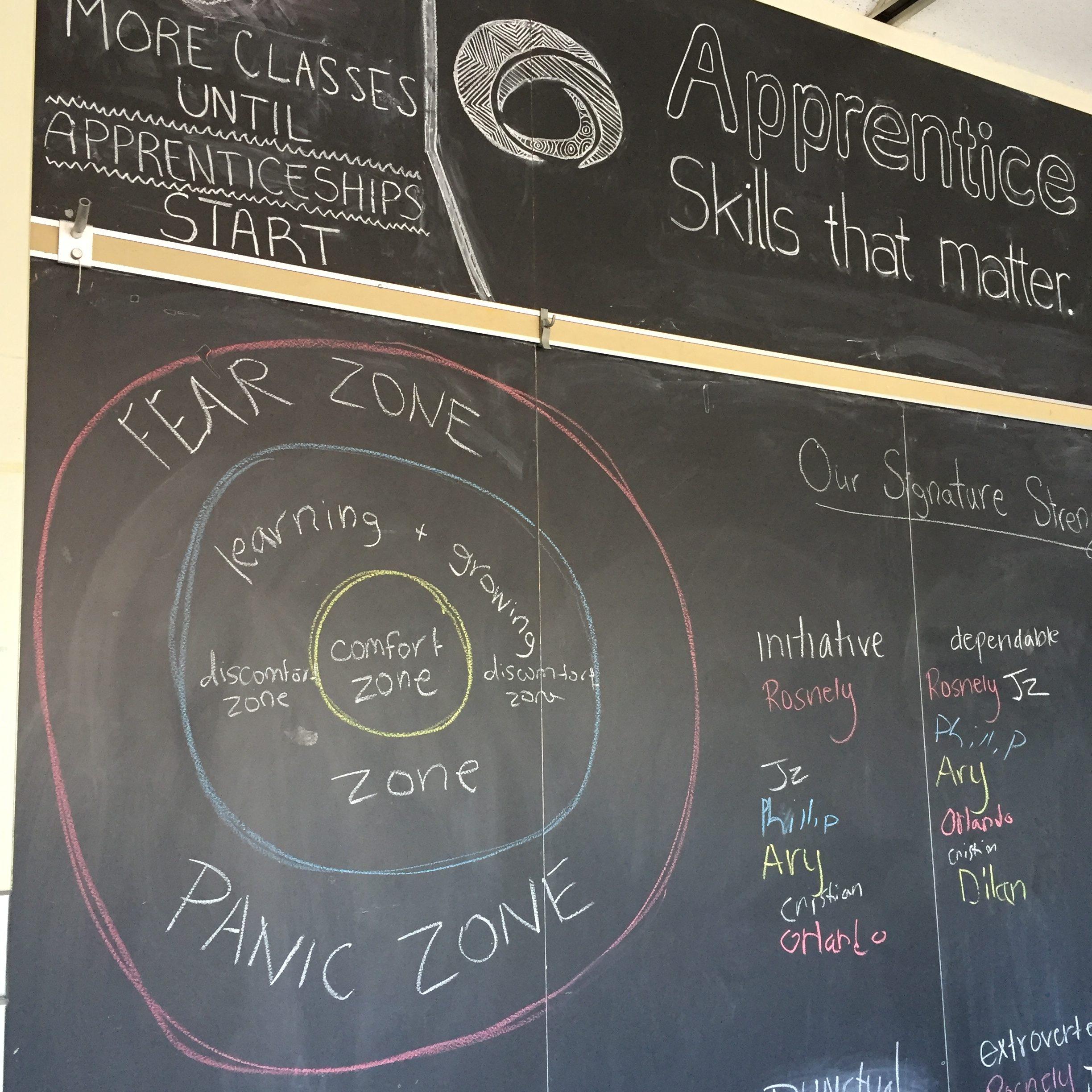Model for Comfort, Learning and Panic Zones
Before an apprenticeship, we build students’ self-awareness with a variety of learning activities to help them understand their strengths, learning styles, interests and skills and how they can utilize their traits during their apprenticeships. This helps students overcome their nervousness and fear of “messing up.”
The “Comfort Zone Model” describes three zones that are common in any new learning situation: the comfort zone, the challenge zone, and the panic zone. By explaining to the students that learning most often happens in the challenge zone, where one feels uncomfortable, nervous, and challenged, we help to them prepare for the “first day” nervousness they will feel at their apprenticeships.
As students recognize this uncomfortable feeling is a normal part of the learning process, it reminds them to activate the skills they practiced in the classroom to make the most of their workplace experience. Ary, from Jackson/Mann School, describes her experience at Brookline Booksmith as follows:
“Before my apprenticeship began I felt very nervous. I was feeling nerves because I never had work experience before, and I felt it was going to be very challenging and new for me. Now, I feel that my time at Brookline Booksmith is very helpful and fun, the people are very nice, and I learned so much there.”
Encouraged by their mentors during the six weeks of apprenticeship, it becomes easier to move out of their comfort zone to the challenge zone. As a young person gains confidence at the workplace, it is easier to embrace future challenge zones, including being successful in a paying summer job and beyond.


